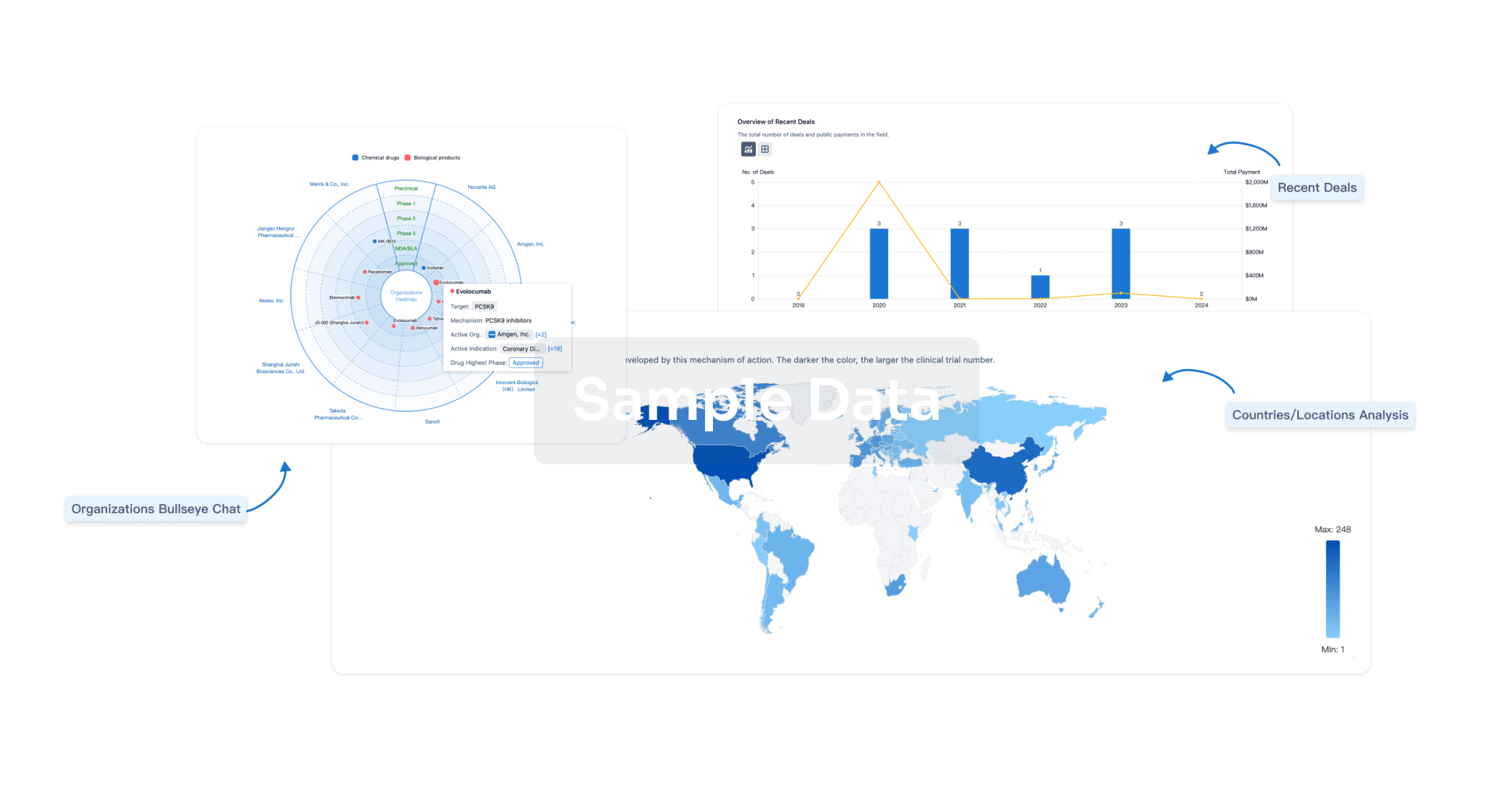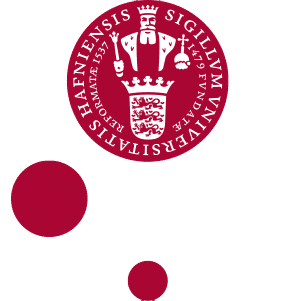Request Demo
Last update 08 May 2025
syncytin
Last update 08 May 2025
Basic Info
Synonyms Endogenous retrovirus group W member 1, endogenous retrovirus group W member 1, envelope, Env-W + [20] |
Introduction Endogenous envelope proteins may have kept, lost or modified their original function during evolution. Retroviral envelope proteins mediate receptor recognition and membrane fusion during early infection. The surface protein (SU) mediates receptor recognition, while the transmembrane protein (TM) acts as a class I viral fusion protein. The protein may have at least 3 conformational states: pre-fusion native state, pre-hairpin intermediate state, and post-fusion hairpin state. During viral and target cell membrane fusion, the coiled coil regions (heptad repeats) assume a trimer-of-hairpins structure, positioning the fusion peptide in close proximity to the C-terminal region of the ectodomain. The formation of this structure appears to drive apposition and subsequent fusion of membranes.
This endogenous retroviral envelope protein has retained its original fusogenic properties and participates in trophoblast fusion and the formation of a syncytium during placenta morphogenesis. May induce fusion through binding of SLC1A4 and SLC1A5 (PubMed:10708449, PubMed:12050356, PubMed:23492904). |
Related
2
Drugs associated with syncytinTarget |
Mechanism syncytin modulators |
Active Org. |
Originator Org. |
Active Indication |
Inactive Indication- |
Drug Highest PhasePreclinical |
First Approval Ctry. / Loc.- |
First Approval Date20 Jan 1800 |
Target |
Mechanism NS1 inhibitors [+1] |
Active Org.- |
Originator Org. |
Active Indication- |
Inactive Indication |
Drug Highest PhasePending |
First Approval Ctry. / Loc.- |
First Approval Date20 Jan 1800 |
100 Clinical Results associated with syncytin
Login to view more data
100 Translational Medicine associated with syncytin
Login to view more data
0 Patents (Medical) associated with syncytin
Login to view more data
607
Literatures (Medical) associated with syncytin01 Dec 2025·Journal of Gastrointestinal Cancer
Bile-Derived cfDNA of Syncytin-1 and SLC7A11 as a Potential Molecular Marker for Early Diagnosis of Cholangiocarcinoma
Article
Author: Zhuang, Xuewei ; He, Jing ; Meng, Weiwei ; Zhao, Xiaoyue ; Qian, Jingrong ; Li, Xin
01 May 2025·Biochemical and Biophysical Research Communications
Functions of the fusogenic and non-fusogenic activities of Syncytin-1 in human physiological and pathological processes
Review
Author: Sun, Yi ; Xu, Ya ; Zhang, Yu ; Yang, Danni ; Chen, Yuling
01 Apr 2025·Cellular Signalling
Potential role of Hematopoietic PBX-Interacting Protein (HPIP) in trophoblast fusion and invasion: Implications in pre-eclampsia pathogenesis
Article
Author: Surapaneni, Tarakeswari ; Kalali, Sruchytha ; Manavathi, Bramanandam ; Kashyap, Deepak Kumar ; Kiran, Manjari ; Row, Anupama T ; Satpathy, Sarthak ; Kizhuvedath, Ajnas ; Penugurti, Vasudevarao ; Dey, Oindrilla ; Khumukcham, Saratchandra Singh
9
News (Medical) associated with syncytin28 Jun 2024
GeNeuro joins a list of companies that have swung at long COVID and missed.
GeNeuro reported (PDF) the near-total failure of its phase 2 long COVID trial Friday, telling investors it saw no effect on the primary endpoint and most secondary goals. The Swiss biotech responded by laying off staff and seeking strategic alternatives.
Geneva-based GeNeuro began testing the anti-HERV-W-Env antibody temelimab, also called GNC-501, in long COVID after seeing evidence immune dysregulation drives the post-infection symptoms. One study found the W-ENV protein on lymphocytes in people hospitalized with COVID-19. If expression continued after infection, the protein could damage cells and cause long-term neurological symptoms.
GeNeuro enrolled 203 people with long COVID at sites in Switzerland, Spain and Italy in the phase 2. All subjects tested positive at the start of the study for HERV-W-Env, the protein targeted by temelimab and the potential driver of long COVID’s neurological symptoms.
However, targeting the protein failed to improve health outcomes. GeNeuro saw no clinically meaningful improvement compared to placebo on the primary endpoint, which assessed fatigue, or on the majority of secondary objectives. Work to understand the data and the effect of temelimab on more biomarkers is continuing.
“Preliminary analyses suggest that shorter disease duration at time of inclusion, as well as the evolution of the underlying HERV-W ENV status, may have an impact on the efficacy outcome measures,” the firm said in a statement.
GeNeuro needed a win. A 5 million euro ($5.3 million) financing in February extended (PDF) the biotech’s cash runway into the third quarter, but, beyond that, the picture is unclear. The board responded to the long COVID failure by further reducing GeNeuro’s workforce and spending to conserve cash as it looks for strategic alternatives.
“The Swiss parent company GeNeuro SA has made redundant seven of its nine employment agreements, including all of the executive management. All employees and managers will work through their notice periods, of up to six months, to execute the strategy that will be defined by the board over the coming days,” the company said.
GeNeuro joins a list of companies that have swung at long COVID and missed. Pfizer's Paxlovid recently failed in the indication. Tonix Pharmaceuticals found its drug candidate had no effect on pain symptoms. Axcella ran out of money while going after long COVID.

Phase 2Clinical Result
11 Dec 2023
GENEVA--(
BUSINESS WIRE
)--Regulatory News:
GeNeuro (Euronext Paris: CH0308403085 - GNRO), a biopharmaceutical company focused on stopping causal factors driving the progression of neurodegenerative and autoimmune diseases such as multiple sclerosis (MS), amyotrophic lateral sclerosis (ALS) and Post-Acute Sequelae of COVID-19 (PASC, Long-COVID or post-COVID), today announced that, as planned in the Study Protocol, the Independent Data Monitoring Committee met to review the unblinded safety and efficacy data of the first 90 patients after three months of treatment.
Based on the planned interim analysis of efficacy and safety data, which included an analysis for futility, the IDMC recommended to “continue the trial without any modifications”.
The study “Temelimab as a Disease Modifying Therapy in Patients With Neuropsychiatric Symptoms in Post-COVID 19 or PASC Syndrome" is a randomized, placebo-controlled, biomarker-based Phase 2 clinical trial evaluating the effect of temelimab treatment on the clinical course of these symptoms.
This trial enrolled 203 patients in 14 clinical centers in Switzerland, Spain and Italy, who were affected by neurological syndromes post-COVID, and who tested positive to the presence of W-ENV in their blood. W-ENV is suspected to have a major role in the persistence of inflammation and in the neurological symptoms affecting these patients, and temelimab is a highly specific neutralizing anti-W-ENV-antibody. GeNeuro’s precision medicine approach allows to identify, within the millions of patients affected by long-COVID, those for whom the treatment may be relevant.
Results are expected in June 2024.
About Temelimab
The development of temelimab (GNbAC1) is the result of more than 25 years of research into human endogenous retroviruses (HERVs), including 15 years within Institut Mérieux and INSERM before GeNeuro was founded in 2006. HERVs have been incorporated into the human genome during the evolution of mankind and typically remain “silent genes”, but may be activated under certain conditions and were found to be involved in the development of auto-immune diseases. The viral envelope protein encoded by the HERV-W family (W-ENV) has been found to be pro-inflammatory and pathogenic to nervous system cells. W-ENV is found in the brains of MS patients, and particularly in active lesions. In two Phase II multiple sclerosis trials Temelimab has shown promising results on MRI features and liquid biomarkers related to neurodegenerative processes such as brain atrophy.
Temelimab is a neutralizing anti-W-ENV-antibody; by this capacity it simultaneously blocks inflammatory and neurodegenerative processes. Given that W-ENV has no known physiological function, temelimab has demonstrated a good safety and tolerability profile in the current study, with no effect on the patient’s immune system, which bears out the profile observed in all clinical trials carried out to date.
About GeNeuro
GeNeuro‘s mission is to develop safe and effective treatments against neurological disorders and autoimmune diseases, such as multiple sclerosis, by neutralizing causal factors encoded by HERVs, which represent 8% of human DNA.
For more information, visit:
www.geneuro.com
.
Disclaimer
This press release contains certain forward - looking statements and estimates concerning GeNeuro’s financial condition, operating results, strategy, projects and future performance and the markets in which it operates. Such forward-looking statements and estimates may be identified by words such as “anticipate,” “believe,” “can,” “could,” “estimate,” “expect,” “intend,” “is designed to,” “may,” “might,” “plan,” “potential,” “predict,” “objective,” “should,” or the negative of these and similar expressions. They incorporate all topics that are not historical facts. Forward looking statements, forecasts and estimates are based on management’s current assumptions and assessment of risks, uncertainties and other factors, known and unknown, which were deemed to be reasonable at the time they were made but which may turn out to be incorrect. Events and outcomes are difficult to predict and depend on factors beyond the Company’s control. Consequently, the actual results, financial condition, performances and/or achievements of GeNeuro or of the industry may turn out to differ materially from the future results, performances or achievements expressed or implied by these statements, forecasts and estimates. Owing to these uncertainties, no representation is made as to the correctness or fairness of these forward-looking statements, forecasts and estimates. Furthermore, forward-looking statements, forecasts and estimates speak only as of the date on which they are made, and GeNeuro undertakes no obligation to update or revise any of them, whether as a result of new information, future events or otherwise, except as required by law.
Phase 2Clinical Result
19 Oct 2023
Partnership to combine GeNeuro’s expertise in HERVs with Verily’s Immune Profiler and Workbench platforms to investigate biomarkers related to HERV-W
GENEVA, Switzerland--(BUSINESS WIRE)-- GeNeuro (Euronext Paris: CH0308403085 - GNRO), a biopharmaceutical company developing novel treatments for neurodegenerative and autoimmune diseases, announced a collaboration with Verily, an Alphabet precision health technology company, to investigate biomarkers related to activation of the proinflammatory HERV-W envelope protein (W-ENV) in SARS-CoV-2 infection.
Through this collaboration, GeNeuro will partner with Verily to build on results published earlier this year in Cell Press, which evidenced the in vitro activation of HERV-W by SARS-CoV-2 in susceptible individuals and the correlation between W-ENV protein levels in serum and lymphocytes with COVID-19 severity.
“Our research indicates that W-ENV contributes to COVID-19 disease severity and may explain manifestations of long-COVID,” said Dr. Hervé Perron, Chief Scientific Officer of GeNeuro. “This collaboration with Verily advances GeNeuro’s ambitions to treat patients with long-COVID using a personalized medicine approach through biomarker identification of those more likely to present with severe disease.”
Verily will provide high-resolution multi-omic data generated from COVID patient samples using Immune Pro Verily’s state-of-the-art immune mapping platform, and high-powered data analysis using Workbench, a secure research environment for governing and analyzing multimodal biomedical data. Both solutions are part of Verily’s broader suite of products built to deliver on the promise of precision health and harness the power of richer, more diverse datasets to accelerate medical research.
“We are excited to partner with GeNeuro to advance our shared belief that identification of actionable biomarkers early in disease can advance precision health and save lives,” said Charlie Kim, Head of Molecular Science at Verily. “This could be an important step toward earlier, more targeted interventions for patients with long-COVID.”
About GeNeuro
GeNeuro‘s mission is to develop safe and effective treatments against neurological disorders and autoimmune diseases, such as multiple sclerosis, by neutralizing causal factors encoded by HERVs, which represent 8% of human DNA.
For more information, visit: .
About Verily
Verily is an Alphabet health technology company focused on research, care, and health financing to deliver on the promise of precision health and help people live healthier lives. We are uniquely positioned at the intersection of technology, data science, and healthcare to create tools to accelerate evidence generation, products to enable more personalized care, and approaches to make costs more predictable. For more information, please visit: verily.com.
View source version on businesswire.com:
Contacts
GeNeuro
Jesús Martin-Garcia
Chairman and CEO
+41 22 552 4800
investors@geneuro.com
NewCap (France)
Louis-Victor Delouvrier
+33 1 44 71 98 52
Arthur Rouillé (media)
+33 1 44 71 94 98
geneuro@newcap.eu
Verily
Steven Cooper
Head of Media Relations
+1 (646) 358 2765
sjcoop@verily.com
Source: GeNeuro
View this news release online at:
Immunotherapy
Analysis
Perform a panoramic analysis of this field.
login
or

AI Agents Built for Biopharma Breakthroughs
Accelerate discovery. Empower decisions. Transform outcomes.
Get started for free today!
Accelerate Strategic R&D decision making with Synapse, PatSnap’s AI-powered Connected Innovation Intelligence Platform Built for Life Sciences Professionals.
Start your data trial now!
Synapse data is also accessible to external entities via APIs or data packages. Empower better decisions with the latest in pharmaceutical intelligence.
Bio
Bio Sequences Search & Analysis
Sign up for free
Chemical
Chemical Structures Search & Analysis
Sign up for free
